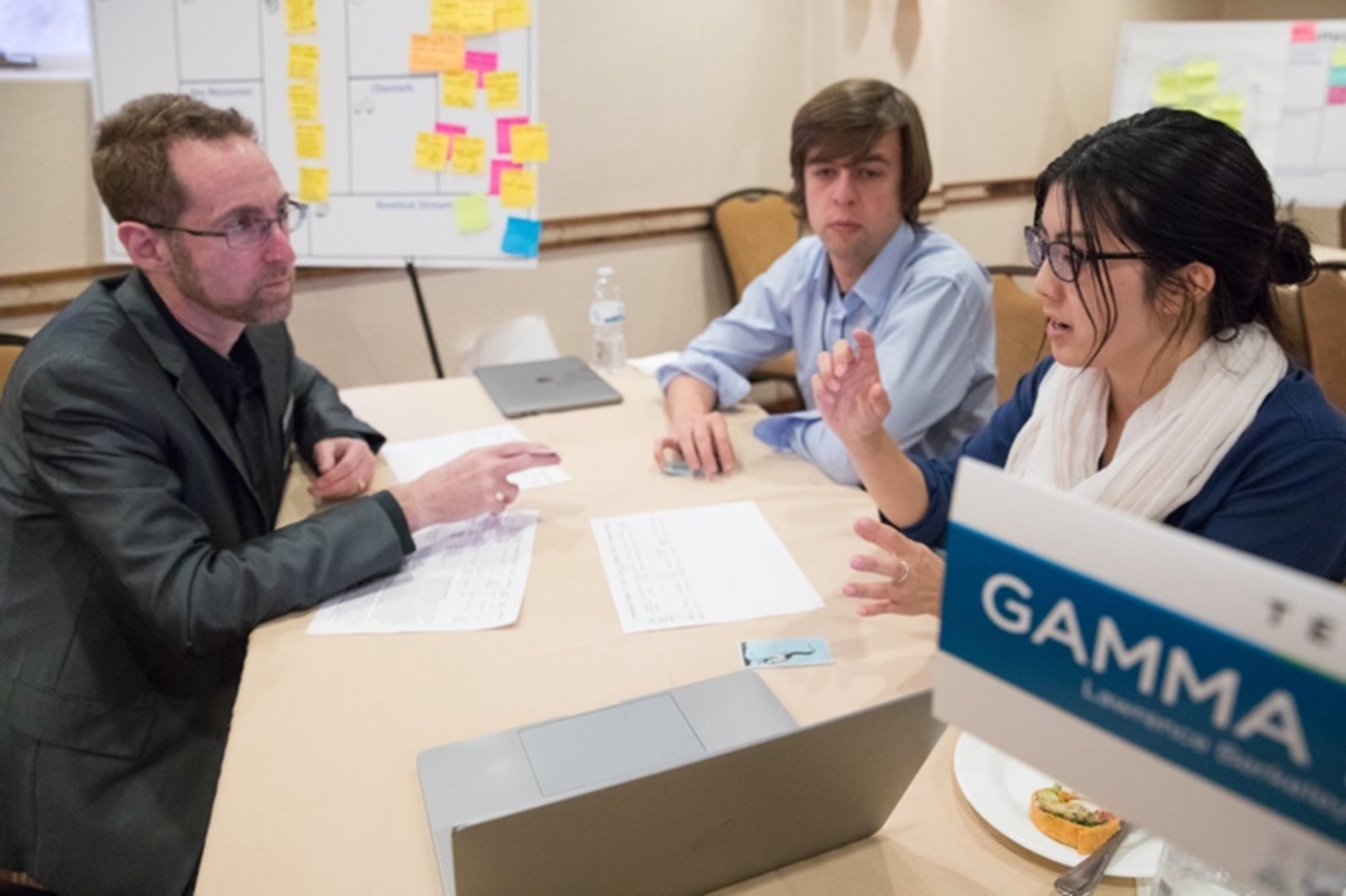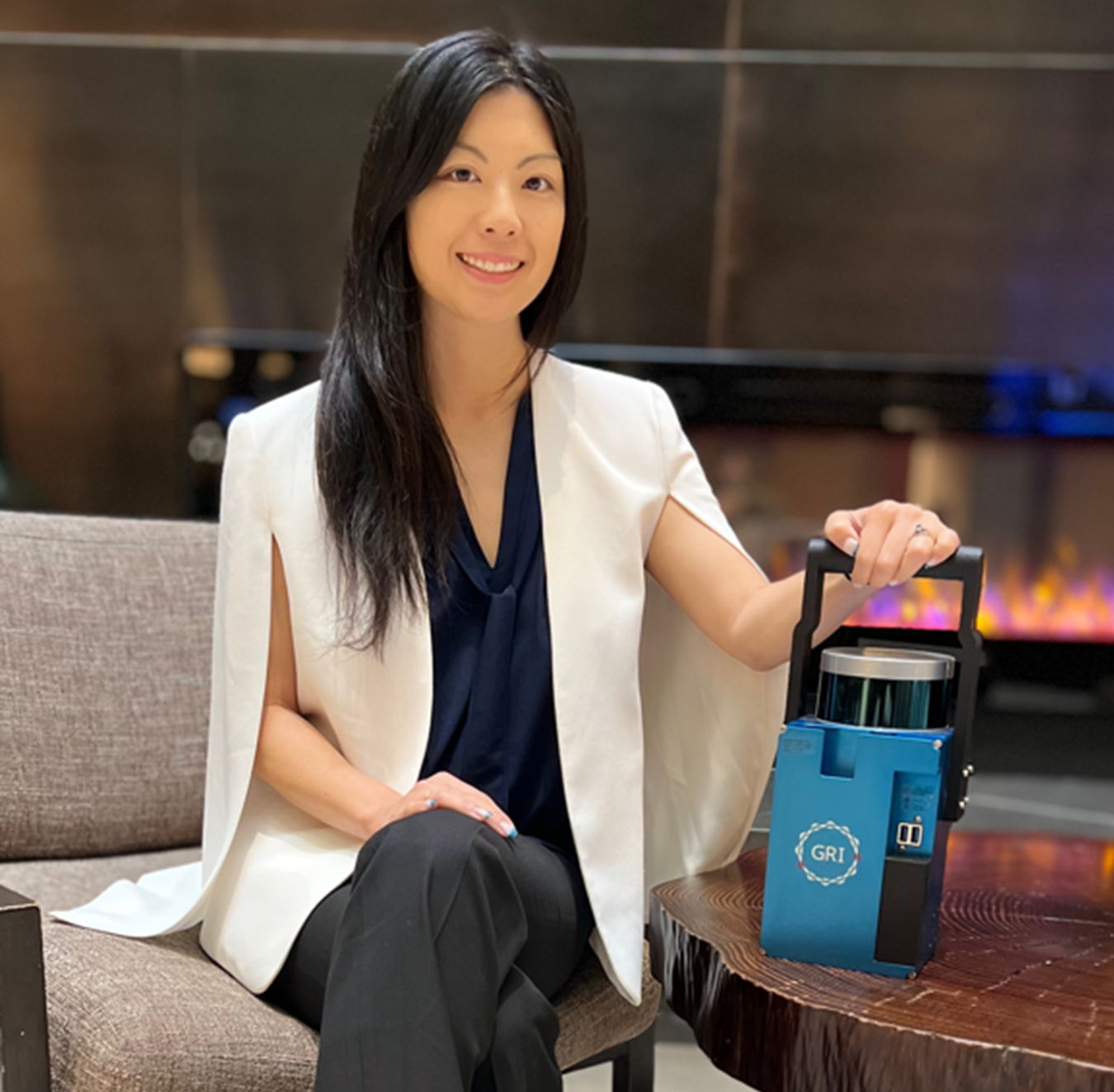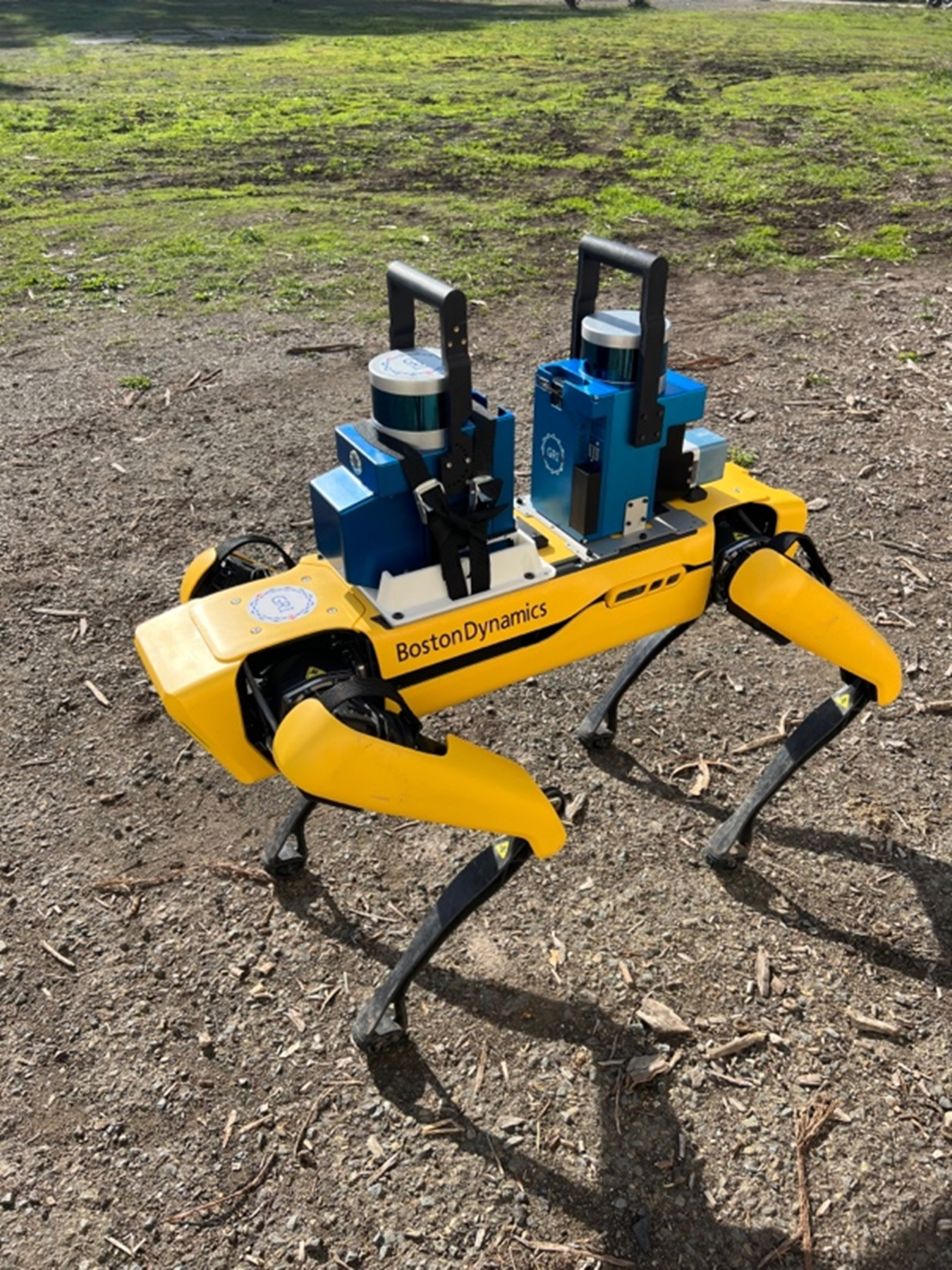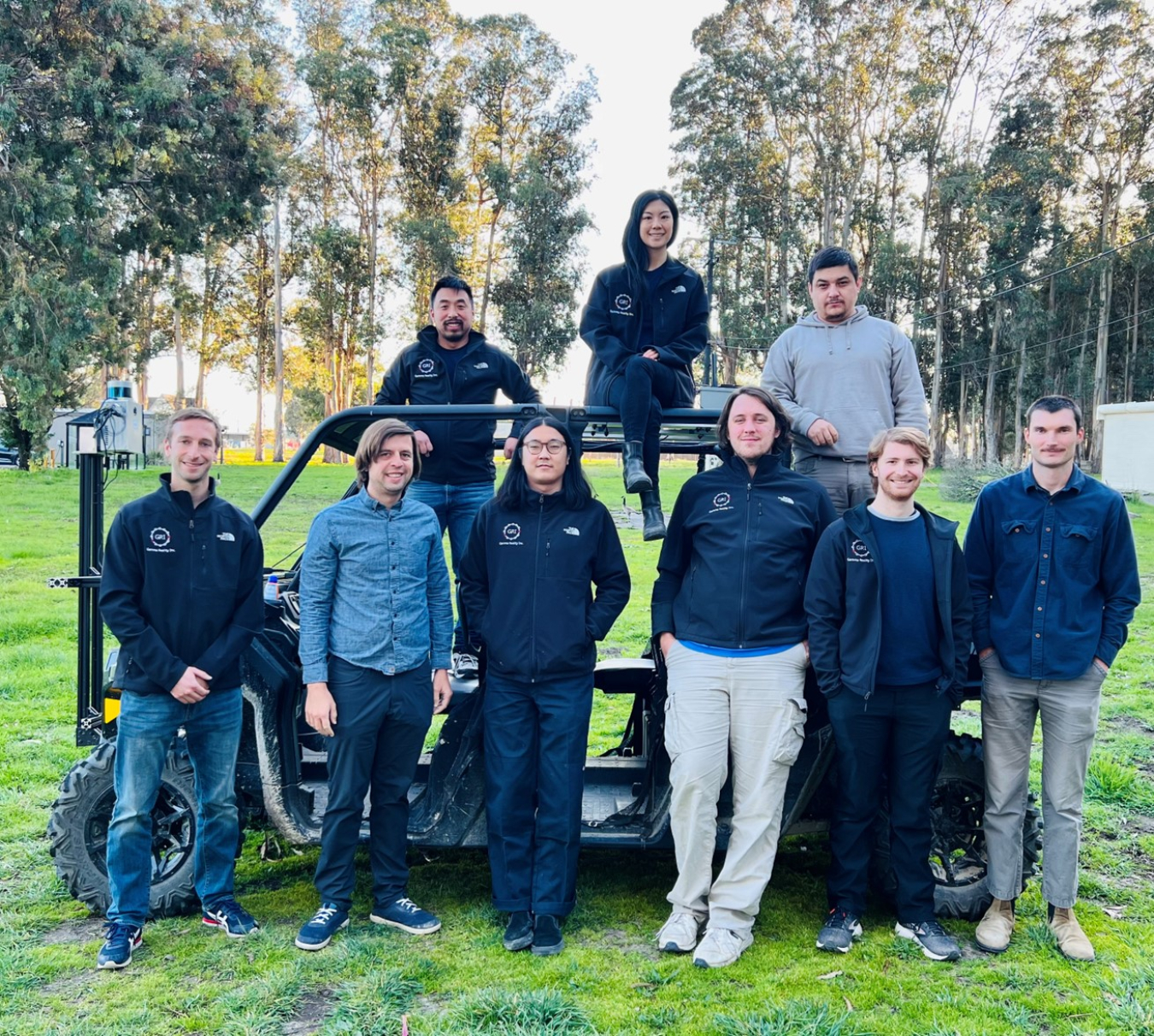San Francisco start-up Gamma Reality, Inc. (GRI) has revolutionized radiation detection by creating safer, efficient real-time 3D mapping technologies.
Office of Technology Transitions
July 19, 2023Energy I-Corps Success Story
Introduction
Gamma Reality, Inc (GRI) is an 11-person start-up based in the San Francisco Bay Area on a mission to make radiation detection safer and more efficient through real-time, 3D radiation mapping technologies. They have worked with industry leaders such as Boston Dynamics and Dominion Energy to deploy their technology at nuclear facilities and a variety of other environments. GRI began its entrepreneurial journey through the Office of Technology Transfer (OTT) Energy I-Corps program and now has successfully funded themselves through commercial sales, project contracts, and a series of Small Business Innovation Research (SBIR) grants.
The Birth of Gamma Reality, Inc.
In 2017, through funding by the Department of Energy’s Office of Environmental Management, Entrepreneurial Lead Erika Suzuki and Principal Investigator Dr. Andy Haefner from Lawrence Berkeley National Laboratory (LBNL) participated in Cohort 6 of OTT’s Energy I-Corps program. Armed with an exclusive license for the technology, dubbed "Localization and Mapping Platform (LAMP),” both went on to co-found GRI, which launched in early 2020. GRI provides real-time, mobile, 3D radiation mapping capabilities deployable in handheld mode, on unmanned robotic platforms (UAV/UGV) and on vehicles, to enable safer, more efficient, and dynamic radiation detection missions. GRI has continued to collaborate with Lab researchers in a completed Strategic Partnership Project (SPP) with SBIR funding from the Defense Threat Reduction Agency (DTRA), as well as a current subcontract with funding from DOE's National Nuclear Security Agency (NNSA).
Today, we are catching up with Erika Suzuki, a GRI co-founder and Head of Business Development, to learn more about the milestones they have achieved since going through the Energy I-Corps program.

Q&A with Erika Suzuki – GRI Co-founder and Head of Business Development
OTT: First off, tell us a little more about the origin story of GRI. How did your team meet and where did the original idea come from?
All of our co-founders are from LBNL, where we worked together on the same research program, led by Professor Kai Vetter, a cofounder and Senior Advisor for Gamma Reality Inc. GRI’s 3D radiation mapping, data fusion and visualization technology initially came from our CEO Andy Haefner‘s PhD research. Our other co-founder and Head of Hardware, Ryan Pavlovsky, designed and built the very first LAMP research prototype and the subsequent commercial systems. Together, we conducted research campaigns all over the world and wherever we went, people kept asking us, “Where can I get one? It would help make my job safer and enable me to better understand and communicate where the radiation is.” Inspired by these experiences and our time in I-Corps, we started thinking about how we could commercialize the technology.
OTT: Tell us more about the problem you’re trying to solve and how LAMP solves it.
Radiation is an invisible hazard and radiation detectors historically have been geared towards expert end users. The other challenge is that these old radiation detectors can’t tell you precisely where the hazard is, so you might be alerted to a hazard in the area, but you won't know exactly where it is. The technologies we developed at LBNL were groundbreaking because we were able to visualize the radiation in a 3D map of the environment in real time. So now, anyone can look at a map and identify if the hazard is in a specific room of a building or if a specific part of a field is contaminated. We still provide all the important information such as dose rate and isotope identification, but the real innovation is in the localization of radiation visualization. Because you’re detecting in real-time, you can map out a hotspot and immediately leave to reduce your exposure as needed. It’s also deployable on robots, so you can avoid radiation exposure completely by putting LAMP on a drone or a ground robot, like Boston Dynamics’ SPOT, and then send those off to investigate an area for you.

OTT: How did participating in Energy I-Corps impact the development of Gamma Reality?
For me, Energy I-Corps was a critical turning point in how I thought about what I wanted to do. I realized that to truly make an impact, the technology would need to leave the lab so it could be used in the real world. I previously had no interest in launching a startup, but I was really fascinated by the commercialization process, especially after learning more about it during Energy I-Corps. Every day, the program taught us how to ask better questions and gain new perspectives into how our technology could be used by different people for different use cases. We were also able to test out various user engagement strategies and fail in a friendly environment. We’re still using what we learned in Energy I-Corps today.

OTT: What milestones have you achieved since participating in the program?
LAMP probably had a Technology Readiness Level of 5 when we began. Participating in the program helped us explore potential target markets, different acquisition timelines, and potential product market fit for different customer segments. In 2019, our team won both the Berkeley Lab and DOE National Laboratory Accelerator pitch competitions and receiving this positive feedback from the investors, I-Corps faculty, and other researchers in attendance also motivated us to pursue commercialization. After the program, we developed the use case for our first target market, which was nuclear power. In January 2020, we launched full time operations.
Today, our team currently consists of 11 people and we are able to support the future of our current nuclear power fleet as well as the development of next-gen nuclear reactors. Our technology helps these plants more efficiently and more safely plan work, which in turn helps reduce radiation exposure for employees and reduces operating costs. Our customers and partners are also being recognized for their work – for instance, Dominion Energy was recently honored with a 2023 Nuclear Energy Institute Top Innovative Practice Award for their work with LAMP and deploying it remotely on Boston Dynamics’ SPOT robot.
OTT: What is next on the horizon for GRI?
We started out with a single 3D-printed prototype, so to be shipping the commercial systems and having people use them has been really rewarding. We’re excited to continue shipping LAMPS out the door, connecting with customers, and engaging different markets to make a positive impact. We’re also continuing to grow our product offerings and expand the capabilities that LAMP can offer. LAMP provides a wealth of data, so there are huge opportunities to expand the software capabilities.

OTT: Is there any advice you’d want to give others as they think about the commercialization journey?
I want to encourage students from social science, policy, and other backgrounds to pursue technology commercialization because there are many ways to contribute aside from building the technology itself. I saw that the latest cohort of OTT commercialization interns included students from diverse backgrounds. Coming from a non-technical background myself, I want to tell others that you don’t need to be a scientist or engineer or have a PhD to commercialize technology.
Energy I-Corps is a key initiative of the U.S. Department of Energy's Office of Technology Transitions (OTT), which sends teams of researchers and industry mentors through an immersive two-month training where the researchers define technology value propositions, conduct stakeholder discovery interviews, and develop viable market pathways for their technologies. To learn more, visit www.energy.gov/technologytransitions/energy-i-corps
To learn more about Gamma Reality, please visit https://www.gammareality.com/.

